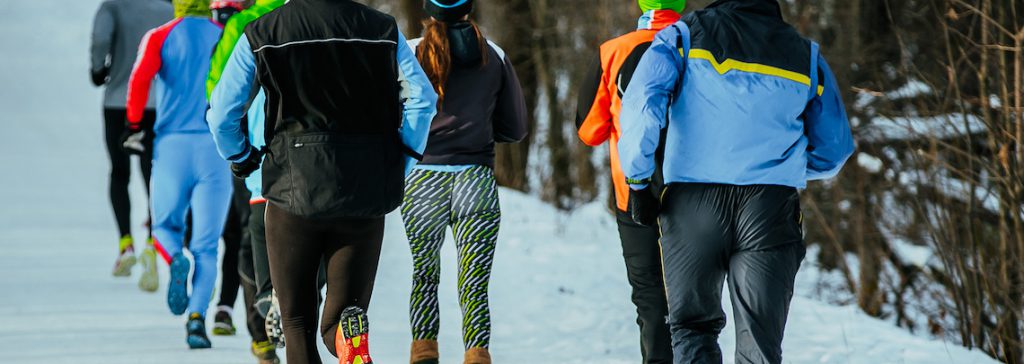Because bitter temperatures and snowy days have a tendency to keep you indoors, remaining active during the blustery months of winter is extremely important to your health. However, there are some safety tips and precautions to keep in mind to ensure you get a safe and effective wintry workout.
If you are exercising outside, whether it’s running, skiing or a group activity, remember to be mindful of cold weather-related injuries and illnesses that can accompany the season.
Hypothermia
Hypothermia is an abnormally low body temperature that occurs when the body loses heat more rapidly than it can produce it. You can get hypothermia from simply being outside too long while not being properly dressed. Also, spending time in the cold while wearing wet clothing—from sweat or otherwise—increases your risks.
How to avoid: Dress in loose layers to capture in warmth. Remove layers one at a time if you become too hot. Avoid wearing cotton, which holds in moisture. Instead, wear a material that wicks away sweat close to your skin, such as those made from synthetic fabrics. Stay hydrated and wear wind-blocking outer layers.
Frostbite
Frostbite happens when an area of the body becomes frozen—typically the hands, feet, fingers, ears or nose. Symptoms include pain, numbness, burning and loss of sensation. The skin may be hard to the touch and appear pale, waxy, gray or black depending on the severity.
How to avoid: Utilize the same preventive methods as with hypothermia and ensure vulnerable areas are shielded from the cold and wind by wearing gloves, caps that cover the ears or earmuffs and dry, weather-appropriate shoes.
Trench foot
Trench foot, also known as immersion foot, affects the bottom of the feet and develops after extended exposure to a damp, cold environment. The area normally appears pale, blotchy, red, dry or blistery after it becomes warm. Symptoms may include pain, itching, numbness, tingling and swelling.
How to avoid: Wear clean, dry socks daily—those that either wick away sweat or are made from wool. Ensure shoes and feet are dry before putting them on. Wearing a plastic bag around socked feet inside your shoes can help protect against wetness if playing in the snow (not ideal for running). Also, sleep without socks to avoid excess moisture.
Should you fear you or a loved one has contracted any of these winter-related illnesses, seek medical attention for guidance and treatment.
